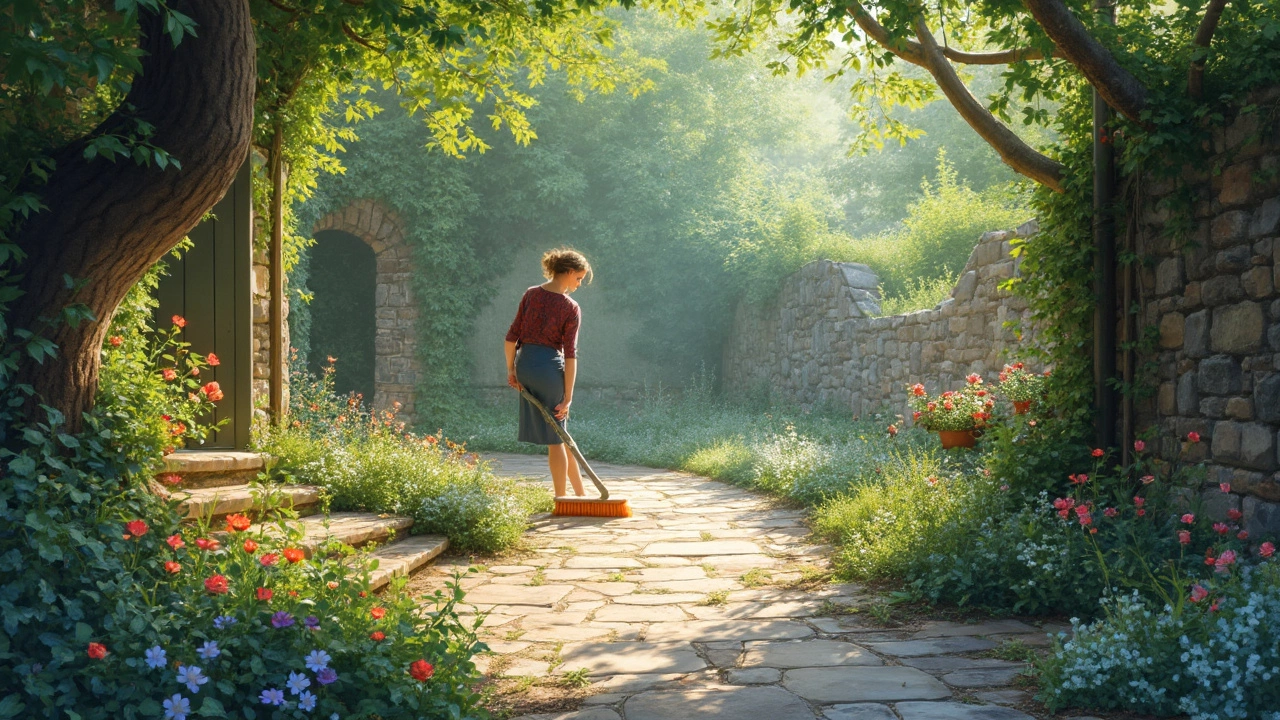Pressure Washing Alternatives: Simple Ways to Freshen Up Your Home’s Outside
Got a dirty driveway, grimy fence, or stained siding but don’t want to rent a noisy pressure washer? You’re not alone. Many homeowners worry about paint damage, water waste, or the learning curve with high‑pressure tools. The good news is there are plenty of easy, low‑cost options that get the job done without the hassle.
Why think about alternatives?
Traditional pressure washing blasts water at 1,500 to 3,000 PSI. That power can strip paint, crack old brick, or blast debris onto neighbors’ yards. It also drinks a lot of water, which isn’t great if you’re trying to be eco‑friendly. If you have delicate surfaces—like cedar siding, vintage brick, or solar panels—soft‑touch methods are safer and often just as effective.
Another factor is cost. Buying or renting a pressure washer can run you £50‑£150 per day, plus you need protective gear and a bit of practice to avoid accidents. Alternatives usually rely on tools you already own, like a garden hose, a bucket, or a handheld steam cleaner, meaning you save money and time.
Top alternative methods
Soft‑wash sprayers. A soft‑wash system mixes water with a low‑pressure pump and biodegradable cleaning solution. The solution sits on the surface and breaks down mold, algae, and dirt without forcing water in at high speed. You can buy a kit for under £100, or even rig a garden sprayer with a pump attachment. Just apply, let it soak for 10‑15 minutes, and rinse gently.
Steam cleaning. Handheld steam cleaners are great for decks, tile, and even siding. The hot vapor loosens grime and kills mold spores without chemicals. Because steam is low‑pressure, there’s no risk of eroding paint. A 1‑liter steam unit costs about £80 and works well for spot cleaning or small areas.
Scrub‑and‑rinse with a hose. For many jobs, a sturdy garden hose with a spray nozzle can do the trick. Use a long‑handled brush, dip it in a bucket of warm water mixed with a gentle detergent (like dish soap or vinegar), scrub the surface, then rinse. This method uses far less water than a pressure washer and lets you focus on problem spots.
DIY eco‑cleaners. Mixing white vinegar, baking soda, and a little dish soap creates a powerful, biodegradable cleaner. Spray the mixture on the grime, wait a few minutes, and scrub with a brush. It works well on mildew‑stained brick, vinyl siding, and even concrete pathways.
Rotary brush attachments. Some electric drills can accept a brush head. Attach a soft‑bristle rotary brush, dip it in your cleaning solution, and run it over surfaces. This method provides extra agitation without the force of a pressure washer, making it ideal for textured walls and garden furniture.
When you choose an alternative, keep a few tips in mind: test any solution on a hidden spot first, work from top to bottom so dirty water doesn’t run over cleaned areas, and always wear gloves and eye protection. If you’re dealing with oil stains or heavy grease, a degreaser like Dawn (used sparingly) can boost results without harming the surface.
Ultimately, the best method depends on your budget, the material you’re cleaning, and how much time you have. Soft‑wash sprayers and steam cleaners offer a professional finish without the risk of paint damage. Simple hose‑and‑brush techniques are perfect for quick touch‑ups. Whichever route you take, you’ll save water, protect your home’s exterior, and keep the neighborhood’s peace.
Ready to try something new? Grab a bucket, a brush, and one of the alternatives above and see how fast the grime disappears. You’ll be surprised how effective low‑pressure methods can be—and you’ll avoid the noise, cost, and headaches that come with a traditional pressure washer.

What Is the Best Thing to Wash Your House With for Eco-Friendly Results?
Discover the safest, most eco-friendly way to wash your house without harsh chemicals. Learn how vinegar, baking soda, and oxygen bleach can clean your home without harming plants, pets, or the environment.
Read More
Why Choose an Alternative to Pressure Washing?
Pressure washing is popular for cleaning outdoor areas, but it might not always be the best choice. Learn about gentler, eco-friendly alternatives that protect your surfaces and can be more efficient. From gentle brushing techniques to smart chemical use, discover options that deliver a sparkling clean without potential damage. Dive into creative, practical tips that keep your home looking its best.
Read More